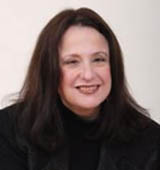February is American Heart Month. How Do You Know if You Have Heart Disease?
What are the Symptoms of a Heart Attack? What are the Symptoms of Heart Disease?
One would think that something as dramatic as a heart attack would be easy to diagnose. However, women are often misdiagnosed when they are having one. This happens in part because they fail to recognize that their symptoms are indicative of a heart attack and because the doctors that they go to may fail to recognize the symptoms of a heart attack as well.
Why is this? For years heart disease was felt to be a man’s disease. It was only relatively recently that physicians and medical researchers realized that it is also very much a woman’s disease. Heart disease is the number one killer of men and women in the United States.
Now we know that women often do not have the same type of heart attack symptoms as men. Men generally present at a younger age than women do with crushing chest pain radiating to the neck or down the arm with sweating, nausea and shortness of breath. They will often describe the pain as “squeezing” or “heaviness,” and may say they feel like an elephant is sitting on their chest. This pain does not stop immediately, but persists for minutes to hours with exercise, and often at rest.
Women’s symptoms
Women are relatively protected from heart disease until menopause (unless they are diabetic). After menopause we catch up with men. So in general women present at an older age with heart disease than men, which is in part why the symptoms may be different. Those who are older in general are less likely to present with chest pain as a heart attack symptom.
Women having a heart attack will most often present with shortness of breath, weakness, overwhelming fatigue, dizziness, nausea, and anxiety. They may experience chest discomfort but they may also have arm pain, jaw pain or indigestion. They also can have pain in the upper back or abdominal pain.
Real women, real stories
Dr. R had one woman patient who presented with severe jaw pain and shortness of breath and another who presented with nausea, vomiting, diarrhea, fatigue, shortness of breath and dizziness. The first patient thought she had a tooth infection and the second patient thought she had the stomach flu. Both waited to seek help and both had severe heart attacks that left them with diminished heart function.
Is it possible to have symptoms of early CHD, before it has reached the stage of a heart attack?
Absolutely. The majority of women who have had a heart attack had symptoms the month leading up to the heart attack that they ignored. And many women had recurring symptoms over a longer period of time that they ignored because the symptoms seemed to go away on their own; but they came back. These symptoms include the ones mentioned above under “women’s symptoms” of a heart attack; they also include becoming short of breath, or getting chest symptoms, with any type of exercise that you were able to do before with no shortness of breath; getting more fatigued after doing an activity that previously did not fatigue you; and always feeling fatigued, or run down, even after you have rested.
What Should I Do if I have any of these Symptoms?
Easy: don’t wait to seek help. The take home lesson here is that we all need to listen to our bodies and not motor on if we think that something is seriously wrong. In addition, if we do think that something is wrong and our medical provider is not addressing our concerns, find another provider who will evaluate them. So, does this mean if you are dog tired for a prolonged period of time, or don’t ever to feel rested no matter how much you rest, you should see a doctor? Yes, especially if you have any of the risk factors. Don’t chalk your symptoms up to doing too much or working out too hard. Pay attention to what your body is trying to tell you.
If you are having a heart attack the goal is to protect your heart. Remember time is heart muscle. Do not wait- call 911 and if you are not allergic, chew an aspirin while you wait for the ambulance to arrive. Be smart, save your heart and save your life.
We discuss heart disease (and stroke) in much greater detail in our book. Also, for further information go to the following website: www.americanheart.org.
comments off Robin Miller | Uncategorized |








